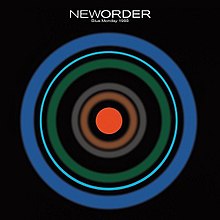In the ever-evolving landscape of music, there are tracks that not only define an era but also reshape the very fabric of the industry. New Order’s “Blue Monday” is one such masterpiece—a groundbreaking anthem that revolutionized electronic music and continues to captivate listeners more than three decades after its release. In this flashback article, we’ll journey back in time to explore the origins, impact, and enduring legacy of “Blue Monday.”

“Blue Monday” emerged as a result of this creative evolution. The track’s driving beats, hypnotic synths, and melancholic lyrics came together to create a sonic experience that was unlike anything the world had heard before. It was a fusion of dance, punk, and electronic elements, pushing the boundaries of what was considered possible in music production.
The track’s lyrics, though cryptic and melancholic, struck a chord with listeners. They explored themes of isolation and emotional detachment, echoing the changing social and cultural landscape of the early ’80s.
Over the years, “Blue Monday” has been remixed and covered countless times, cementing its status as a timeless classic. Its influence can be heard in the work of countless artists and in various genres, from techno to alternative rock. In 2019, Rolling Stone magazine ranked it as the greatest dance song of all time.
New Order’s “Blue Monday” is more than just a song; it’s a symbol of innovation, creativity, and the ever-evolving nature of music. Its impact on electronic music and popular culture cannot be overstated. As we look back on this iconic anthem, we’re reminded of the transformative power of music and its ability to push the boundaries of what is possible in the world of sound. “Blue Monday” is a timeless reminder that the most groundbreaking music is often born from a fearless embrace of the new and the willingness to challenge the status quo.





